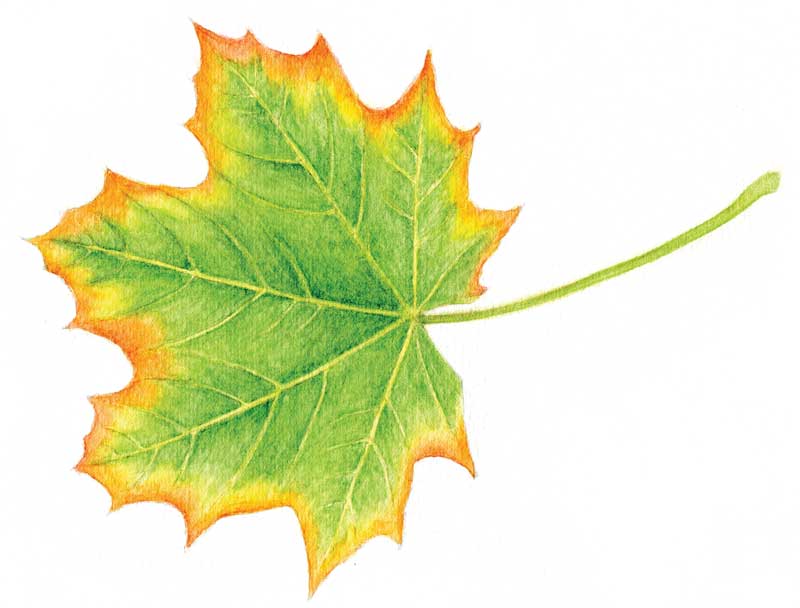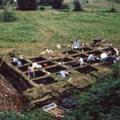Welcome Downeast
The Town, the Bays, the Mountains
Dear Friends:
One of the joys of late summer is cloud-watching. No earthly landscape can match the majestic cloudscape. Summer clouds are magic mountain ranges, heavenly Himalayas and Rockies, Adirondacks and Atlases. There are dragons, dinosaurs, walruses, and whales chasing titanic flying ships with billowing sails rising higher than the eye can see. They shift before our eyes. The fierce dragon becomes a puppy, and the flying fish an angel. The ethereal dimensions these clouds inhabit are too vast for even our wildest imaginings to grasp. They are the dreams of the heavens that make fruitful life on earth.
Field and forest report, September
This is the season of seeds. Not only are the wildflowers all around us going from bud to bloom to seed, but so also are the towering trees. Everyone knows the familiar maple “whirligigs” that come twirling down on the breeze just before the trees lose their leaves. These seeds are edible for anyone who has the patience to shell them out and parboil them—best done in the spring.
Evergreens are called “conifers” which means “cone-bearers” and so they do. Spruces, firs and pines bear their cones mostly in their topmost branches. The cones of balsam fir, Abies balsamea, grow upward from the branches, starting off a deep green decorated with jewels of golden resin then turning brown in early fall when the scales separate. Our spruces, black and red, Picea mariana and Picea rubens, bear their cones downward from top branches. The small pink to brown cones of the eastern larch, Larix laricina, or “hackmatack,” grow upward from limbs throughout the tree and may hang on for two or three years.
Natural events
Early fall can be an awkward season—like having one foot on the dock and one foot in the boat. We look back and pretend it is still summer when we want to be down by the water or sitting in the sun or simply admiring the garden, basking in the warmth as though it would never end. But we also look forward to the chilly season ahead when we want to have the storm windows up, the wood stacked, and the house buttoned up for winter and when the cool, brisk air cleanses our hearts and sets them a’dancing among the flaming leaves. It can be awkward for us upright, bipedal mammals who sprang from hot central Africa and moved ever towards the chilly north where the nights are long. When evening comes earlier and earlier, we are often of two minds.
Other creatures appear to have no such ambivalence.
They are busy doing their autumn work. Overhead many birds—songbirds, raptors, waders, and geese—are making their equinoctial migration to warmer climates. For them, ambivalence could be fatal, there is no turning back. White-tail bucks have lost their velvet and the fall rut will soon be underway, as it has since before humans came to this continent. All these know that autumn is at hand and they must be about their business to prepare themselves and their young for the cold season ahead.
Field and forest report, late September
Bees, butterflies and other pollinators count on this last showing of wildflowers to top off their summer’s feast and strengthen the next generation. Mowing fields while they are still in bloom may be convenient for the mower, but it is an abrupt deprivation for many wild creatures who also merit consideration. After all, whose fields are they, really? Frosts will come more often now and gradually put the fields and farms and gardens to sleep. As rugged as pumpkins and winter squashes are, their vines are not so tough and will soon wilt and fade with the cold, but not before delivering a last stroke of vibrant color to their fruits. Apples, too, seem to be nicely finished by a few frosts, brighter and sweeter than before.
 Illustration by Candice Hutchison
Natural events, October
Illustration by Candice Hutchison
Natural events, October
The annual autumnal ingathering is underway whereby the yield of summer is brought in and stored for leaner times ahead. The last cutting of hay is baled and in the barn. Apple pickers work their way through the orchards on pointed ladders, bringing in the fruit. Kitchens are fragrant with canning of jams, jellies, applesauce, pickles and those magical dilly beans that can heal any malady. Firewood is stacked in the woodshed and the prudent homeowner begins buttoning up the home. After a couple of hard frosts have killed the vines, pumpkins are carried from the garden adding a splash of orange on the front stoop or around the mailbox out by the road. With every full canning jar, every bushel of apples, every cord of wood put up our hearts are filled a little more, leaving less room for the fear of the cold and dark ahead. A full woodshed and a full pantry make for a full heart, and a full heart makes for generosity and charity for others.
Out walking this time of year it’s easy to see there are apple trees all around. Along roadsides, in fields, in the woods: they seem to be everywhere. Those who know about these things say that the immigrants from Europe who settled here brought apple scion wood and seedlings with them and planted them as soon as they could. Pumpkin, squash, corn, and beans were already growing here when the Europeans arrived, cultivated by the First People who shared them with the new arrivals.
Field and forest report
Beneath white pines the ground is covered with their rusty needles which give off the most beguiling perfume when the October sun hits them. Yellow hawkweed dominates the fields and frilly asters, from pink to lavender to purple dominate the margins. Hawkweed is around all summer but this is the season of glory for asters.
Sphinx moths dart from flower to flower gathering nectar to sustain them a while longer. Orange and black Ladybug beetles fly the colors of October as they gather on the warm side of the house on these fall afternoons.
Seasonal events
The change of seasons here in Maine can be dramatic, especially as autumn makes its entrance with bright colors of orange, red and gold. Fall comes every year, but there are also much longer seasons, ages, epochs and eons that change the face of the earth more slowly. The ancient Greeks talked about the Golden Age long past when all was at peace. Archaeologists tell us about the Stone Age, the Bronze Age, the Iron Age, the Industrial Age, and the Information Age, named for the tools used by humans in each era. Climatologists tell us about Ice Ages that abide over thousands of years.
These ages all last far longer than a human lifetime, so their coming and going may be much harder to see, though we can sometimes sense within us these great changes ever so slowly sweeping over the face of the earth, and feel a sense of foreboding. Yet, such fears may be quickly overcome by a brisk walk abroad on an electric autumn day when maple leaves are glowing like stained-glass windows, geese are fleeing southward in long, honking, wavering Vs, crickets are fiddling away in the grass, squirrels are hustling up, down and sideways storing nuts and seeds for all, and the air is fresh and clean pouring down from Canada. These are changes that can stir the soul, fire up the heart, and give us courage for tomorrow.
Seedpod to carry around with you
From Edwin Way Teale, 1899-1980:
“On such October days as this, we look about us as though in some new and magic land. The mystical draws close behind the luminous veil. We see the things about us and sense larger meanings just beyond our grasp. Looking back on such a time, we add—as Thoreau did one autumn day—‘And something more I saw which cannot easily be described.’”
That’s the Almanack for this time. But don’t take it from us—we’re no experts. Go out and see for yourself.
Yr. mst. humble & obd’nt servant,
Rob McCall
✮
Rob McCall (1944-2023) lived in Brooklin, Maine. The selections in this almanack were excerpted from his archives.
Related Articles
Share this article:
2023 Maine Boat & Home Show

Join Us for the Maine Boat & Home Show!
Art, Artisans, Food, Fun & Boats, Boats, Boats
August 11 - 13, 2023 | On the waterfront, Rockland, Maine
Click here to pre-order your tickets.
Show is produced by Maine Boats, Homes & Harbors magazine.















